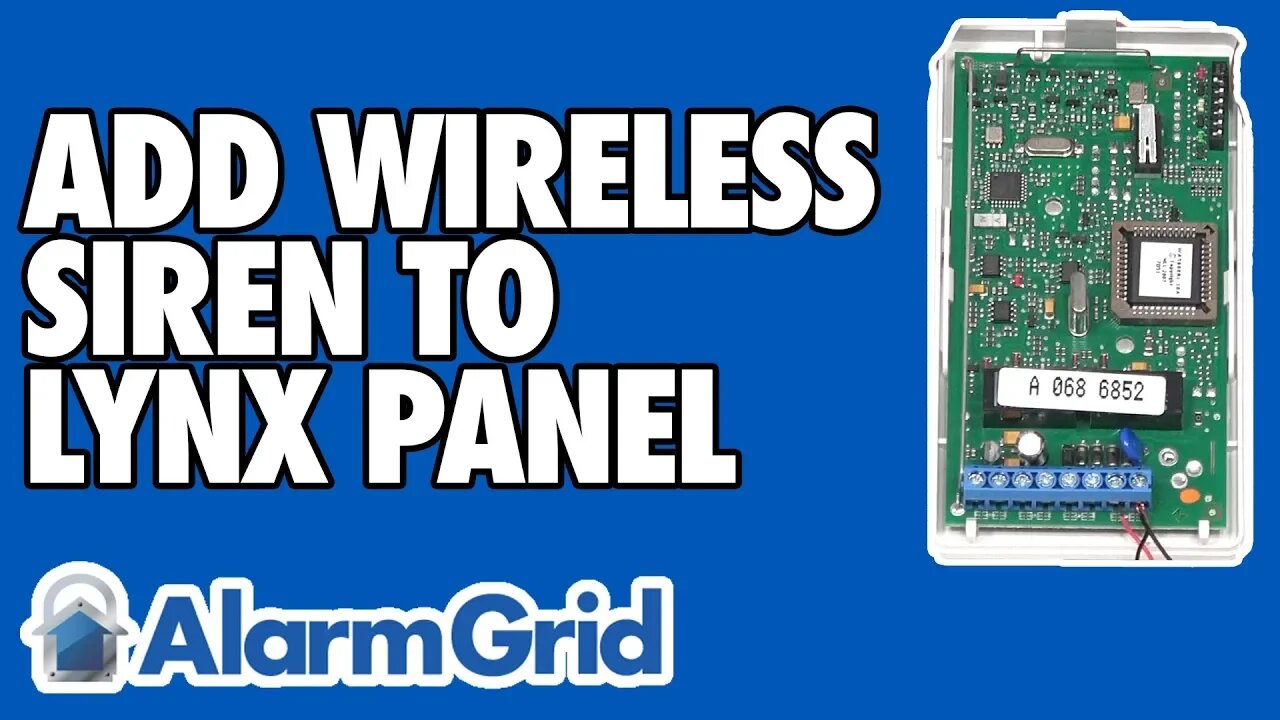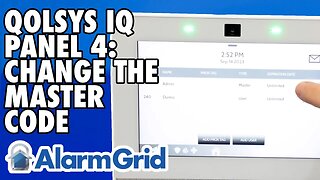Premium Only Content

Adding a Siren to My LYNX Touch Panel Using The Lynx-EXT
In this video, Joe demonstrates how to add an external siren to a Honeywell LYNX Touch System using the LYNX-EXT Kit. This kit is put together by Alarm Grid, and it includes everything a user needs to add a hardwired siren to the system and have it function wirelessly, minus the actual siren itself.
Adding a hardwired siren to a wireless panel like a Honeywell LYNX Touch is a bit more involved than adding a wireless siren. A hardwired siren requires a power supply and a relay that will only distribute power when an alarm is in effect. A backup battery is also needed so that the siren can activate when the power is out.
What's special about the LYNX-EXT Kit is that it allows a hardwired siren to communicate wirelessly. This way, the panel won't need to have any hardwired connections. All communication from the panel will be with the wireless relay. In this case, a Honeywell 5800RL is used. The panel will wirelessly alert the 5800RL, and the 5800RL will tell the Honeywell AD12612 Power Supply to send power to the siren for activation. This will occur during any alarm.
An important thing to note about the Honeywell 5800RL is that is requires bi-directional communication with the panel. This is necessary for getting the siren to stop when the alarm is cleared. Since bi-directional communication is needed, the 5800RL is enrolled using a 2-digit House ID. Only the LYNX Panels and VISTA Panels have this House ID. As a result, these are the only panels that can support the 5800RL. It will not work with other 345 MHz panels, like the Honeywell Lyric Controller and 2GIG GC2 or GC3.
Each LYNX-EXT Kit from Alarm Grid includes an UltraTech 1240 Battery, a Honeywell 1361-GT Transformer, a Honeywell AD12612 Power Supply, a Honeywell 5800RL Relay, and a metal enclosure. The user will still need to add the hardwired siren and the necessary wiring.
NOTE: Joe uses a strobe light in this video to prevent possible ear damage while testing. The 5800RL will provide a steady relay closure for a burglary alarm, and a pulsing relay closure for a fire alarm. For this reason, you would not want to use a strobe in this application if you had fire zones because the pulsing output will not allow the strobe to charge properly, and therefore it will not discharge properly. This is why when Joe sets off the fire alarm, you only see one pulse of the strobe before it stops flashing. If Joe had allowed it to proceed, it would have flashed again, but not in the normal manner expected upon an alarm.
-
 4:37
4:37
Alarm Grid Home Security DIY Videos
1 year agoQolsys IQ Panel 4: Change the Master Code
29 -
 59:17
59:17
Matt Kohrs
13 hours agoRumble's Q3 Recap & What's Next w/ CEO Chris Pavlovski
97.9K30 -
 1:43:47
1:43:47
Adam Does Movies
18 hours ago $29.08 earnedGladiator II Early Reviews + Tom Cruise Stans Glen Powell + Freddy Krueger - Movie News LIVE!
88.4K5 -
 2:24:03
2:24:03
WeAreChange
13 hours agoTrump Creates Department Of Government Efficiency With Elon And Vivek!
146K102 -
 2:10:32
2:10:32
Slightly Offensive
15 hours ago $31.81 earnedGET READY: Civil Unrests ERUPTS As Trump Resistance 2.0 EMERGES
82.9K85 -
 59:40
59:40
The StoneZONE with Roger Stone
11 hours agoShowdown in the Republican US Senate Caucus - RINOs Seek to Undermine Trump | The StoneZONE
78.2K45 -
 1:26:29
1:26:29
I_Came_With_Fire_Podcast
17 hours agoSpecial Episode: Frank Luna with Smokeless Vets
49.2K3 -
 4:16:31
4:16:31
Tundra Gaming Live
13 hours ago $1.99 earnedFormer Air Force Maintainer (Weapons) Hits The Grind For The F-16c
32.8K1 -
 1:07:06
1:07:06
The Officer Tatum
13 hours agoLIVE MSNBC, CNN IMPLODE As Trump BUILDS DREAM TEAM!
95K201 -
 17:42
17:42
DeVory Darkins
2 days agoCNN Dana Bash LOSES HER MIND After BRUTAL Reality Check
61.7K106